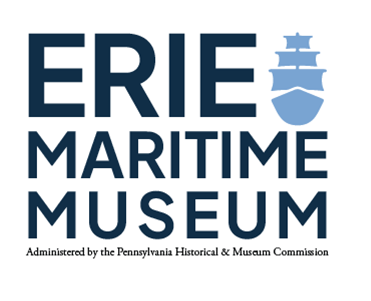The Bosun’s Call
“Heigh, my hearts! Cheerly, cheerly, my hearts! Yare! Yare!
Take in the topsail.—Tend to th’ master’s whistle.—Blow, till thou burst thy wind, if room enough!”
Charles Curtze’s Boatswain’s Pipe - FN2011.2.69
For some, the sound of a “bosun’s pipe” strikes up many fond (or terrible) memories. The history of this unique tool predates the United States by centuries, dating, at least, to the 13th century [1] however, there is evidence that navies have used pipes since antiquity. The Boatswain’s call was predominantly used to issue orders during times when voices could not be heard over the rumbling sea. Early on, the pipe was a symbol of rank, perhaps due to the fact that these were worn by high-ranking officers to signal orders to the crew. With the advent of electronic communications, this began to change. Today, orders, messages, and commands are sent to the crew via a 1MC [2] however, bosun’s pipes still play a key role in modern navies via signaling reveille and taps as well as “piping aboard” officers in ceremonies.
The collection of the Erie Maritime Museum has a variety of unique artifacts including this piece - a Boatswain Pipe owned by Erie-native, Rear Admiral Charles A. Curtze. A traditional pipe is made of a narrow, serpentine tube that, when played, would pass air over a metal sphere called a “buoy”. Most are reinforced with a thin piece of metal known as a “keel” or “flag”. This pipe was made in England in the middle of the 20th century by ACME. Rather than the traditional chain or knotwork, Mr. Curtze used a blue shoestring, which remains to this day.
Born in Erie on April 8, 1911, Charles Curtze made a career in the United States Navy. He graduated from the U.S. Naval Academy in 1933 and went on to obtain a Master’s degree in Naval Construction from the Massachusetts Institute of Technology. On December 7, 1941, Curtze was serving as the Fleet Safety Officer aboard USS St. Louis at Pearl Harbor, Hawaii. During the attack, Curtze safely guided St. Louis to sea. Following the attack on Pearl Harbor, he would oversee emergency repairs on several ships. He later served as Commander of the shipyards at San Francisco and Norfolk. His final naval assignment was Deputy Chief of the Bureau of Ships before he resigned in 1965.
USS St. Louis - October 1944
This pipe was used by Rear Admiral Curtze to call his dogs, both while stationed at the San Francisco Naval Shipyard and in retirement. The Rear Admiral wanted to be remembered as a “pacifist at heart” despite his life-long career in the armed services. He passed away on December 26, 2007, in a suburb of Erie, Pennsylvania (Millcreek Township) and is buried at Erie Cemetery.
[1] There is documentation that a pipe was used to call crossbowmen to the deck of a warship to fire upon an enemy.
[2] A 1MC is the primary all call aboard a modern US Navy/Coast Guard vessel. MC stands for “Main Circuit”. There are other main circuits aboard these ships as well. For more information, visit this Wikipedia page.
[3] The sound of a Boatswain’s Call



